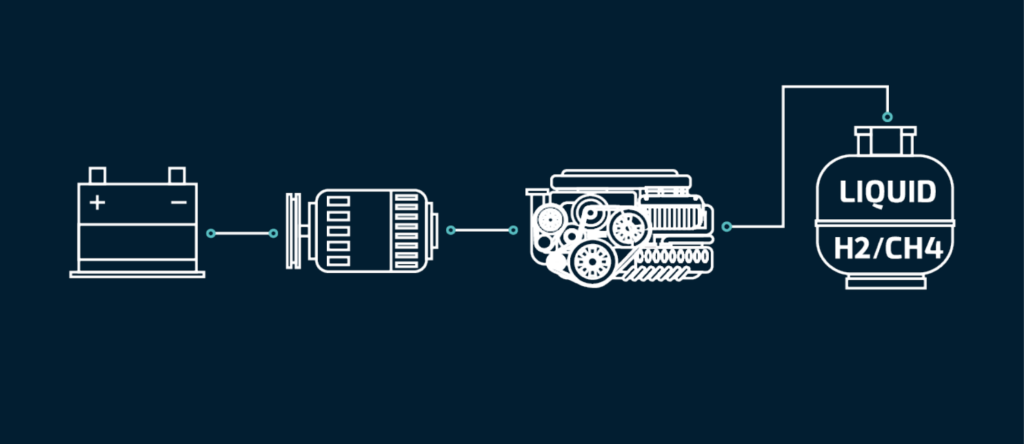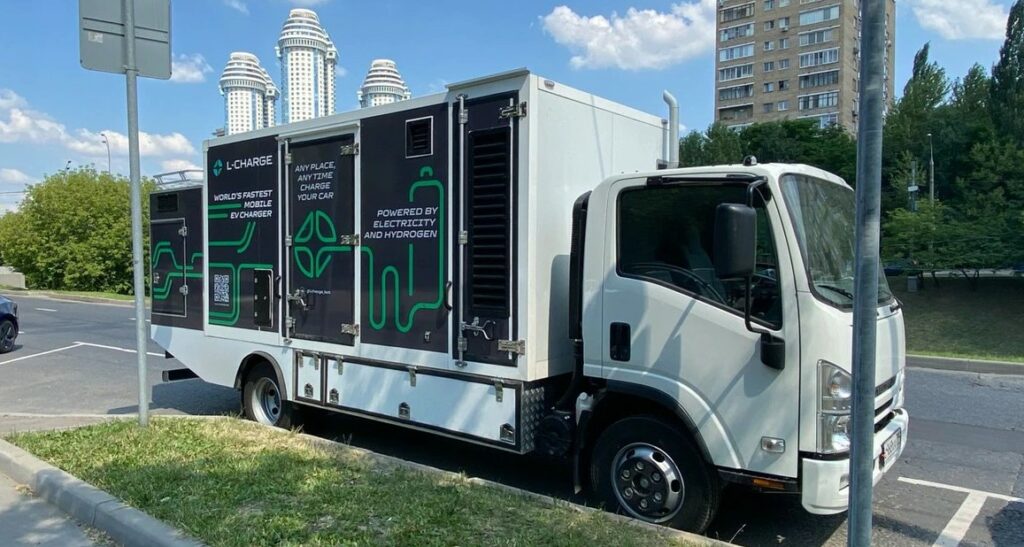Bring me my charger!

(Image courtesy of L-Charge)
Russian EV charger manufacturer L-Charge announced in June that its first mobile EV charger is in service on the streets of Moscow, where customers can summon it to wherever they are using an app (writes Peter Donaldson).
Mounted on a light truck, the charging system can deliver 120-250 kW and can charge an EV as quickly as its battery can accept the energy, providing enough for a range of 100 km in 5-10 minutes, says the company.
What’s different about L-Charge’s solution is that instead of a power-bank style battery system that must itself be recharged, it uses a small IC engine to drive a generator. To minimise harmful emissions the engine burns renewable natural gas (RNG), which is essentially methane in liquid form. It can also run on compressed hydrogen or a mixture of the two.
L-Charge’s CEO Dmitry Lashin says burning natural gas in its charger is 5-7% cleaner than doing so in gas thermal power stations, which would make it cleaner than charging the vehicle from the grid or a socket.
The company stresses that its methane-burning charger emits less CO2 per 100 km than a diesel car, and that mixing hydrogen with the methane reduces carbon emissions still further. Burning pure hydrogen of course would not emit any CO2 but can result in the formation of oxides of nitrogen (NOx) compounds, which are harmful but normally mitigated by reducing combustion temperature through exhaust gas recirculation in IC engines.
A lot of work is being carried out around the world to reduce emissions from the combustion of natural gas, including RNG, by blending it with hydrogen through careful preparation of the fuel-air mixture, including pre-mixing it before it enters the combustion chamber. Adding hydrogen naturally reduces carbon emissions and can also reduce NOx by reducing combustion temperatures.
One centre of such work is the Advanced Power and Energy Program at the University of California. Researchers there caution that issues such as flashback (the sudden movement of the reaction into the pre-mixer) and blow-off (the sudden detachment and extinction of the stable reaction) remain challenges to be overcome.
The IC engine currently in the charger is claimed to be around 40% efficient in terms of its conversion of fuel into electricity, but L-Charge plans to introduce a new engine in 2024 that is designed to improve that by 10%. Also, in 2025 it plans to introduce a CO2 absorption module for liquid methane fuelled chargers that will cut its emissions in half.

(Image courtesy of L-Charge)
The emissions from the charger are produced locally, however, so achieving cleaner air in Moscow relies on EVs replacing as many IC-engined vehicles as possible. Worldwide, that is being held back by the slow development of Level 3 fast chargers, systems that can deliver enough charge for 100 km of driving in 5 to 50 minutes, compared with Level 1 and 2 chargers that take between 2 and 8 hours.
L-Charge also offers a fixed version of the system capable of charging four cars at once. It runs unmanned, needs no connection to the power grid and can be installed in a day.
ONLINE PARTNERS































